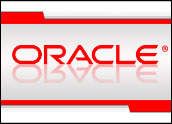
Oracle’s OpenWorld conference last week in San Francisco combined the company’s traditional shows Oracle AppsWorld and OracleWorld in the company’s largest conference ever. More than 25,000 customers, vendor partners, Oracle employees and analysts took part. Even Microsoft made its first appearance.
“Technology demand clearly has been recovering and improving,” Oracle chairman Jeff Henley told attendees at the show’s opening. The four-day agenda stood as testimony to Oracle’s belief that global growth in technology will continue. Oracle has experienced record revenues, record profits and record cash-flow margins.
Reliability and Scalability
At the conference, Oracle showcased its accomplishments during the industry downturn now coming to a close after several years.
“The strongest point was that they now have a new [business intelligence] release that is more stable in terms of technology,” said Noel Yuhanna, a Forrester analyst in attendance at OpenWorld. “They believe their customers should adopt [Oracle’s Business Intelligence 10g] for better performance, scalability and reliability.
Besides that, the integration of various heterogeneous data environments together into a data hub provides one consolidated view” of customers, he said. This has been the premise and, to date, only the promise of many CRM systems. “Customers are struggling with a consolidated view of data,” Yuhanna said.
Oracle’s new data hub leverages an existing product, RAC or Real Application Cluster. “The data hub ties many computers together to serve as a mainframe, balancing the data load among multiple CPUs so that if one computer is down, you won’t lose the database,” Yuhanna told CRM Buyer. RAC helps cost-conscious customers, he said, because it enables them to use low-cost commodity servers in place of a traditional mainframe.
Consolidating BI Infrastructure
Business Intelligence (BI) 10g, annouced at OpenWorld, is a comprehensive product for data queries, reporting and analysis, progress-showing dashboards, data integration and BI application development. It provides information on customers and business processes, enabling users to “drive better performance, alignment, collaboration, measurement and transparency with good information,” said Charles Phillips, president of Oracle.
With a planned market availability in the first quarter of 2005, BI 10g rolls up Oracle’s Discoverer, Spreadsheet Add-In, Warehouse Builder and BI Beans products.
Discoverer is a query, reporting and analysis tool. Spreadsheet Add-In gives users direct access to relational and online analytical processing (OLAP) data and stores changes made by individuals within an organization on their desktop Excel applications to the central database rather than to their local hard drives. That means that when their colleagues in other departments enter the system, they have the most recent data.
Warehouse Builder generates code that enables the system to draw data from multiple applications, including SAP, Microsoft and IBM products. BI Beans are reusable Java components that give system users the same query and presentation interface regardless of the data and application they’re accessing.
Oracle partner EMC offers extra help for companies interested in BI 10g with its EMC Oracle Database 10g Accelerator, an information lifecycle manager that combines EMC networked storage systems and software with professional services to reduce the time it takes customers to deploy Oracle’s 10g product. EMC reasons that the more quickly adopting companies implement 10g, the less it will cost them because their need for consultants and trainers will follow a compressed calendar.
Connecting Servers and Databases
Oracle also used the show to announce its new data hub concept in which information from all data systems — departmental (product data from manufacturing, for instance), organizational (citizen data for governmental bodies, for example), and external — gets along. “No matter the vendor, wherever data exists, you have a persistent asset,” said Phillips.
The data hub fits within Oracle’s Grid, which performs applications with a predictability not available with the pull of data and the varying capabilities of different branded systems. The Oracle Grid sets all business activities on parallel planes, creating an IT environment more adaptable to change, Oracle says.
Improving Performance
E-Business Suite 11i.10, available now, incorporates a wealth of technology-industry and cross-industry functionality but also has embedded background intelligence and knowledge management and a data warehouse that can be pulled up through individually tailored dashboards that show staff on different levels of an organization different levels of information, based on what they’re entitled to see.
All of this structure and discipline, Oracle says, should produce shorter down times for system upgrades, better direction in deciphering what data in the company’s nearly infinite supply is relevant, more efficient data analysis and faster run times.




















































